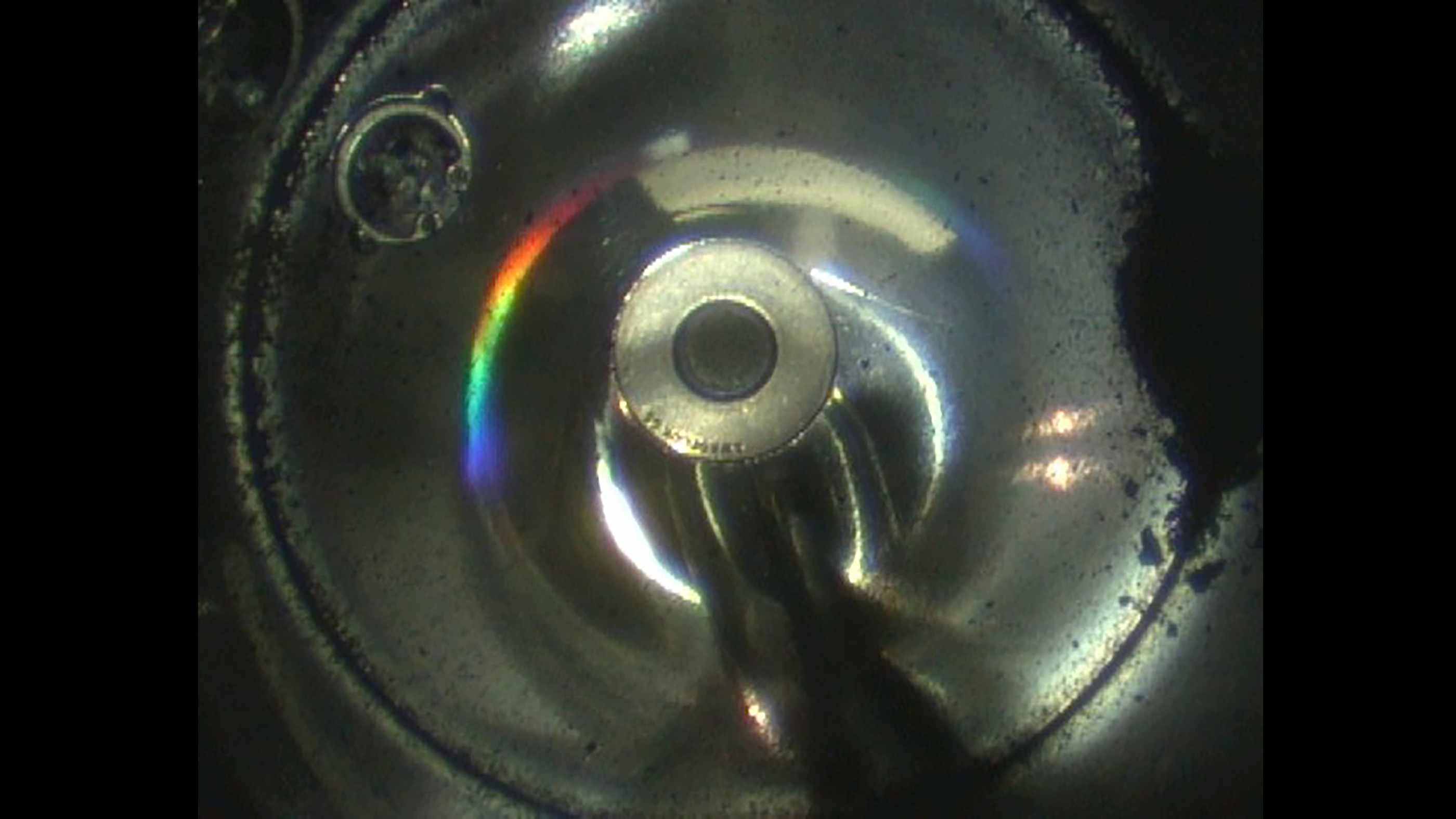
Black sandy grains (R) collected from the asteroid Ryugu brought back by the spacecraft Hayabusa-2. /CFP
Black sandy grains (R) collected from the asteroid Ryugu brought back by the spacecraft Hayabusa-2. /CFP
Black sandy dust found in a capsule brought to Earth by a Japanese space probe is from the distant asteroid Ryugu, scientists confirmed after opening it on Monday.
The discovery comes a week after the Hayabusa-2 probe dropped off its capsule, which entered the atmosphere in a streak of light before landing in the Australian desert and then being transported to Japan.
The Japan Aerospace Exploration Agency (JAXA) released a picture of a small deposit of sooty material inside the metal box – a first glimpse at the results of an unprecedented six-year mission for the unmanned probe.
The dust was found in the capsule's outer shell, agency officials said, with more substantial samples expected to be found when they open the inner container, a delicate task.
"JAXA has confirmed that samples derived from the asteroid Ryugu are inside the sample container," the agency said. "We were able to confirm black, sand-like particles which are believed to be derived from the asteroid Ryugu."
Hayabusa-2 traveled about 300 million kilometers from Earth to collect the samples, which scientists hope could help shed light on the origin of life and the formation of the universe. The probe collected both surface dust and pristine material from below the surface that was stirred up by firing an "impactor" into the asteroid.
"We will continue our work to open the sample-catcher within the sample container. Extraction of the sample and analysis of it will be carried out," JAXA said.
Half of Hayabusa-2's samples will be shared between JAXA, U.S. space agency NASA and other international organizations, and the rest kept for future study as advances are made in analytic technology. But work is not over for the probe, which will now begin an extended mission targeting two new asteroids.
Source(s): AFP

